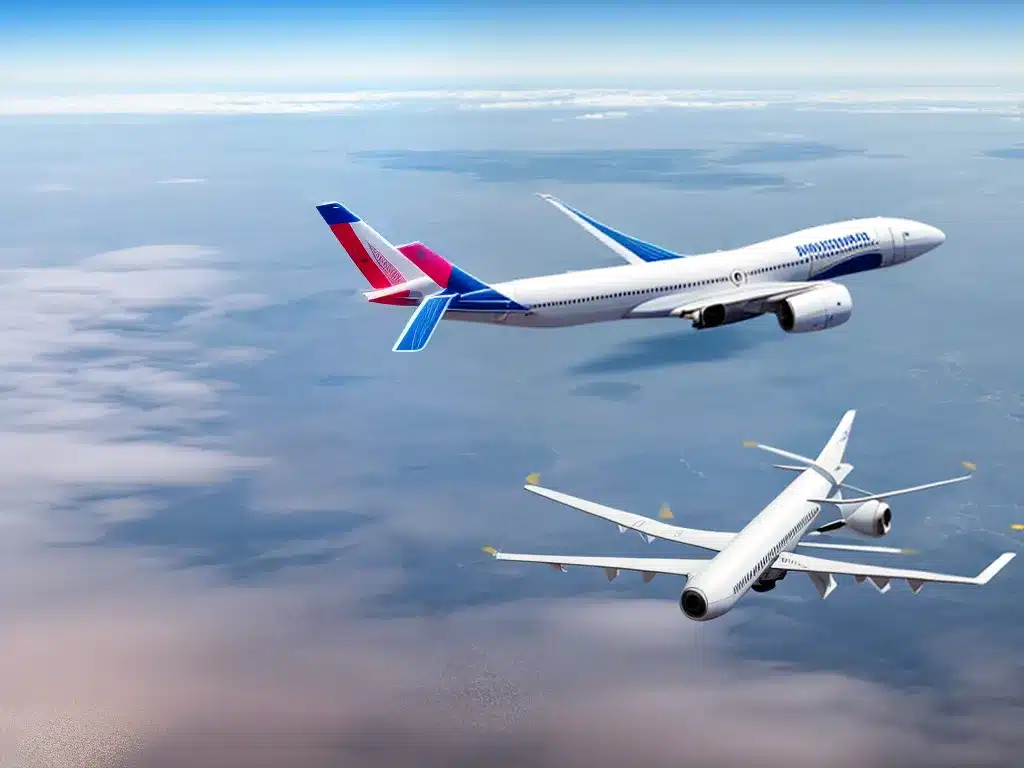
IoT in the Skies: Connected Aircraft, Drones and Air Traffic Control
The Internet of Things (IoT) is transforming aviation and airspace management. As an aerospace engineer, I am excited to see how connected aircraft, drones, and air traffic control systems are evolving with new IoT capabilities. In this article, I will provide an in-depth look at the impact of IoT across the aviation industry.
Connected Aircraft
Modern airplanes are increasingly connected thanks to IoT technologies. This connectivity provides numerous benefits for airlines, pilots, and passengers.
Operational Efficiencies
IoT sensors throughout the aircraft collect data on the plane’s systems and performance. This data is analyzed in real time and transmitted to the airline and maintenance crews on the ground. As a result, issues can be identified and addressed rapidly to reduce delays and disruption.
IoT connectivity also enables more efficient flight plans and routing. By having accurate data on weather, winds, and other factors, airlines can optimize routes to save time, fuel, and costs.
Enhanced Experience
In the cabin, passengers are benefiting from IoT-enabled solutions. For example, connected sensors can monitor cabin temperature, lighting, and entertainment systems. Airlines use this data to adjust the environment in real time for passenger comfort and satisfaction.
Pilots also have more information at their fingertips thanks to cockpit connectivity. Relevant data like weather, maps, and flight alerts can be accessed instantly, improving situational awareness.
Predictive Maintenance
The data from onboard IoT systems enables predictive maintenance. By analyzing real-time engine performance, vibration sensors, and other factors, maintenance needs can be anticipated before issues occur. This prevents unscheduled repairs and keeps planes in the skies.
Over the lifetime of an aircraft, this data-driven approach significantly reduces downtime and maintenance costs. It also improves safety by preventing potential in-flight mechanical issues.
Connected Drones
IoT and drone technologies are intersecting to open up new aerial applications and capabilities. As a drone operator, I am particularly interested in the following IoT applications for drones:
Beyond Visual Line of Sight (BVLOS) Operations
One major limitation of drones today is that they must be operated within visual line of sight. IoT connectivity provides capabilities like detection of nearby aircraft, real-time flight telemetry, and emergency recovery to enable BVLOS drone operations. This will allow long-range drone delivery and other use cases not possible today.
Real-Time Data Streaming
Drones with IoT capabilities can stream data in real-time for more effective and faster decisions. For instance, an accident scene can be assessed quicker through real-time drone video. Or crop health can be monitored instantly via drone-captured imagery versus manual field inspection.
Swarming, Collaboration
Connecting drones via IoT allows them to operate collaboratively in swarms. Each drone shares telemetry and positioning data so that swarming algorithms can be implemented autonomously. This enables new applications like coordinated shows or emergent swarm behaviors.
Charging and Maintenance
IoT sensors on drones can monitor battery charge,damage, and other maintenance needs. This data helps optimize charging and upkeep to maximize flight time and safety.
As drone adoption increases, IoT will be key to enabling more advanced and safer operations.
Air Traffic Control Advancements
IoT is also upgrading traditional air traffic control infrastructure and systems. As an airspace manager, I see three key improvements with IoT:
Automation and Optimization
IoT data collection across the national airspace system allows for automation and optimization of traffic flows. Machine learning algorithms can use this data to route planes swiftly and efficiently at a macro level based on weather, congestion, and other factors. This reduces fuel waste and passenger delays.
Enhanced Safety
Connected sensors across planes, airports, and infrastructure improve situational awareness and safety. IoT-enabled radar provides superior accuracy on aircraft positions. Airport sensors monitor ground congestion. With more data, air traffic controllers can spot and mitigate emerging risks better.
NextGen Traffic Management
The FAA’s Next Generation Air Transportation System (NextGen) relies heavily on IoT connectivity and data exchange. As NextGen is implemented across US airspace over the next decade, it will use real-time IoT data to transform traffic management capabilities. This will support continued aviation growth and complexity safely and efficiently.
In summary, IoT is integral to the future of commercial and civilian aviation. Connected aircraft, drones, and air traffic control systems enabled by IoT will drive operational enhancements, new capabilities, and improved experiences across this massive industry. As an aerospace professional, I am excited to see this technology innovation continue transforming flight.












